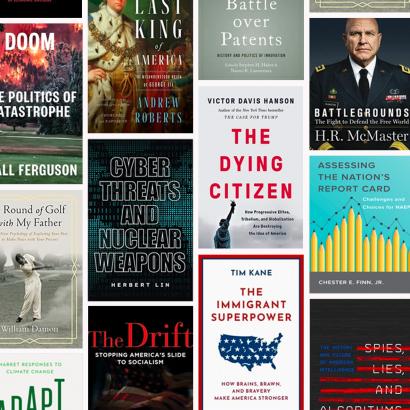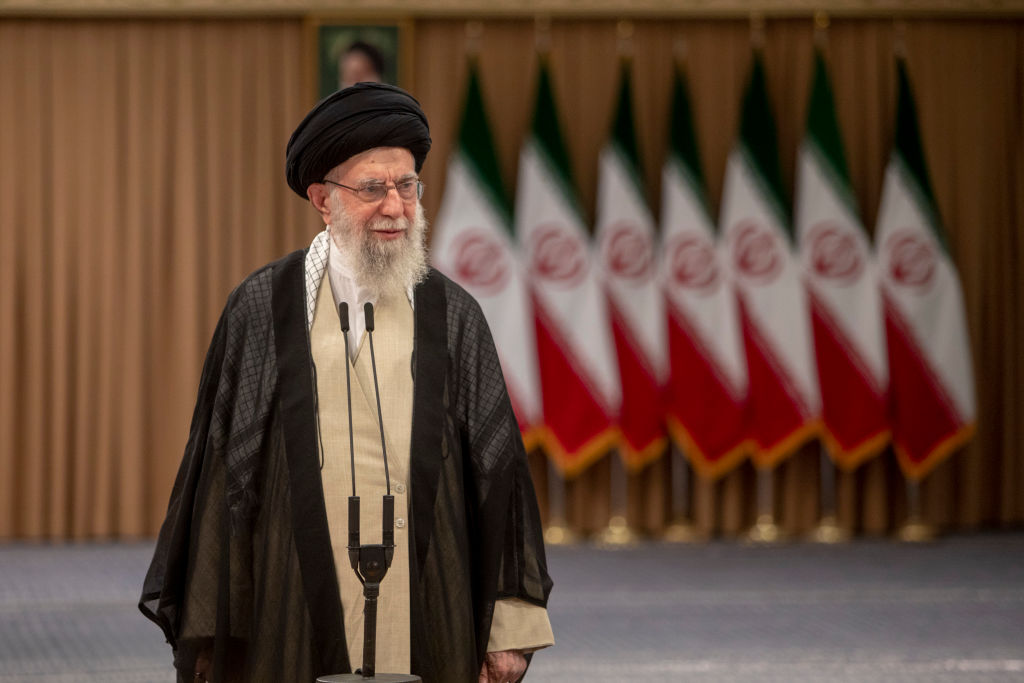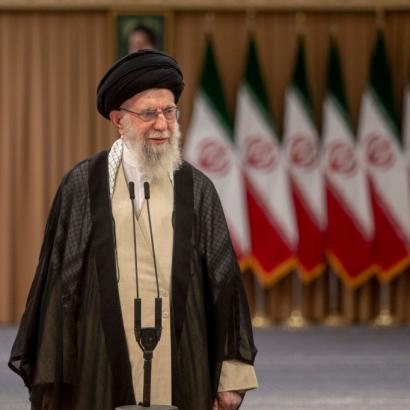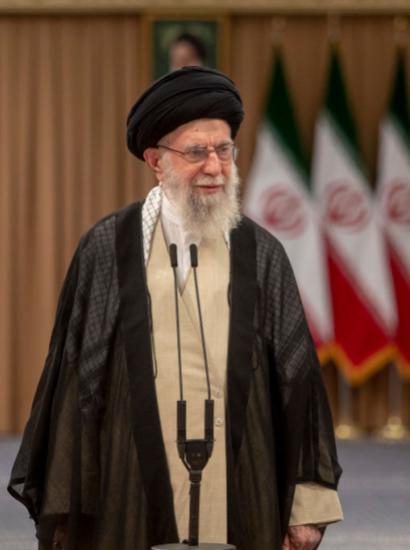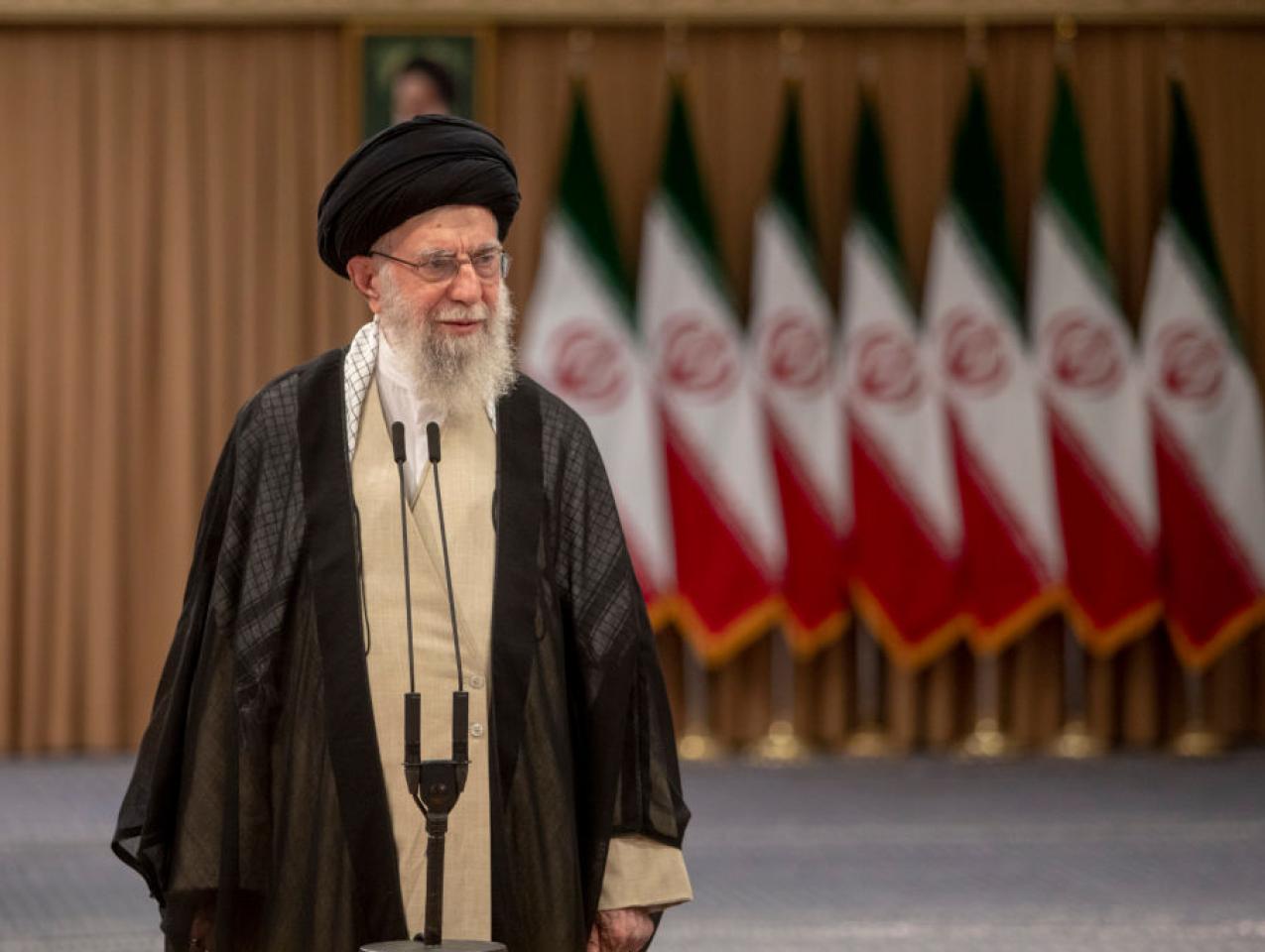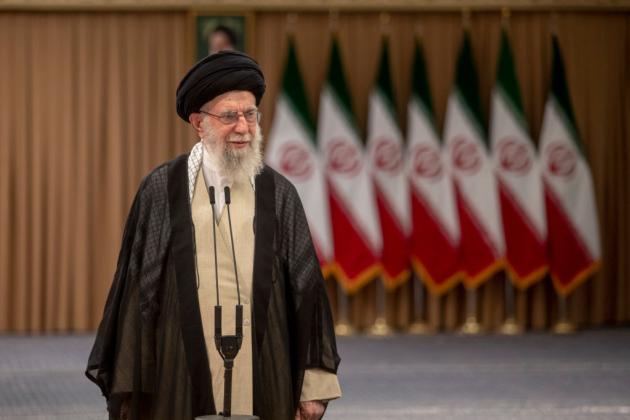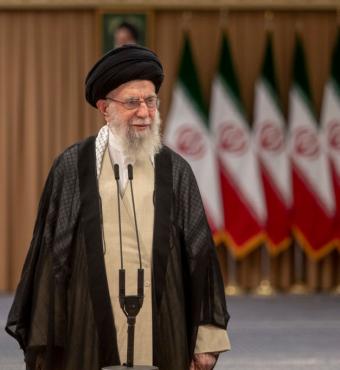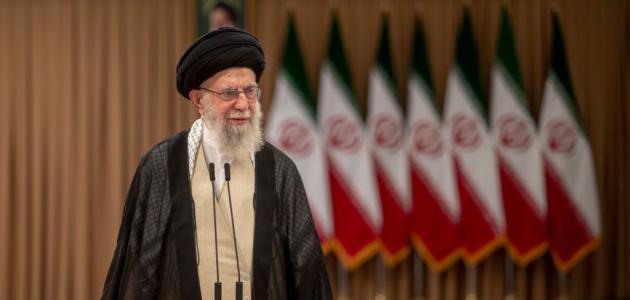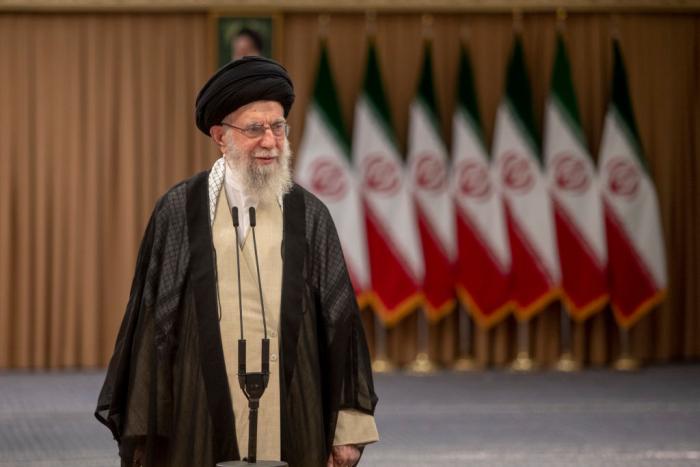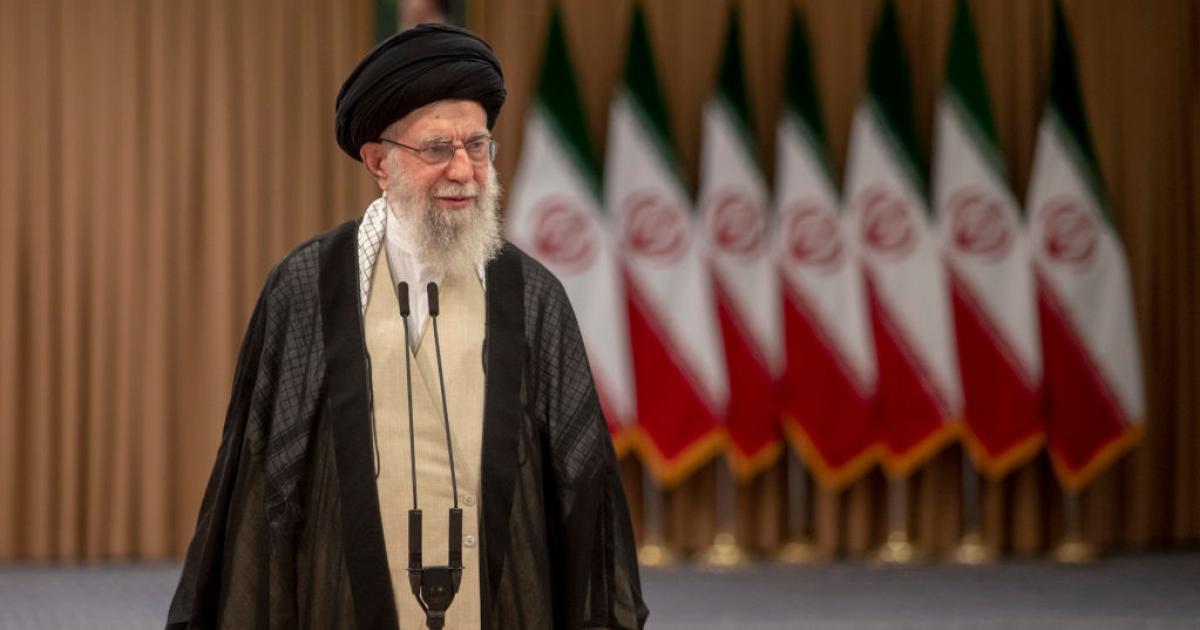- Determining America's Role in the World
Don Quixote was an earnest “knight,” fighting the demons of his tormented, yet vivid, imagination. Seyyed Ali Khamenei, whose ideological kinsmen occasionally loiter in the pages of Cervantes’s masterpiece, is an earnest “warrior”—or in his preferred parlance, a Jihadist—in a holy war against the demons of an incongruent mix of paranoid certitudes and individual insecurities. Real or imagined enemies not only populate his world but dominate it. Their pervasive power and pernicious conspiracies are, in his mind, no match for the omnipotence of the Allah he purports to represent. He is probably comforted by the delusion that the inevitable apocalyptic war of his imagination will end with a victory for his view of Shiism—a Procrustean view that excludes every Muslim in the world, save his own diehard supporters; moreover, he sees himself both a harbinger, and the anointed midwife of this sacred and salutary cataclysm.
In the 1950s and 1960s, Khamenei was an unknown seminarian in the city of Mashhad—a particularly sacred city for Iranian Shiites-- his demons and imagined enemies were the private musings of a tormented character. He dabbled in poetry and fancied himself an intellectual. Credible reports suggest that in those salad days, he even attended some of the gatherings of the decidedly “secular” intellectuals he admired, where music and libations of all sorts were a source of intoxicated merriment. Apparently, the sharper edge of his dogmatic piety—despotically enforced in his childhood by his stern father—was for a while softened by these albeit brief elected affinities. When in 1989, he was “anointed” the Supreme Leader of a pseudo-totalitarian regime, these demons and his designs for fighting them were no longer private; all but instantly they became a formative part of the Islamic regime’s strategic vision. His poetic and literary avocation were henceforth limited to occasional “audiences” he afforded an increasingly smaller number of sycophants who only pandered to his grandiose paranoia and delusions. As a result of his ascent and dogged hold on power, much of the history of Iran, the region, and even the world has become, to paraphrase Joyce, a “nightmare from which [we] are trying to awake.”
Soon after the fall of the Shah, Ruhollah Khomenei, the founder of the new Islamic regime, declared that the primary goal of the 1979 revolution, the real reason people took to the streets, was to create a new more Islamic society, a new Muslim man and woman. The economy, he once derisively declared, is for donkeys. Echoing, probably unwittingly, the words of Dostoyevsky’s “Grand Inquisitor,” Khomeini claimed that Iranians made the revolution not for bread or the frivolities of a free secular temporal world, but for the consolation of faith in this transient world and for salvation in the eternal other. To court and continue the unwieldy alliance of leftists, rightists, centrists, feminists, orthodox Stalinists and new “post-colonialists” and even feminists that had helped or embraced his rise to power, Khomeini cleverly and invariably peppered his Islamist proclamations with the jargon and phrases that allowed these disparate forces to cling to him as the “liberating” persona they desired. In due time, the tragedy of this deluding “transference” became clear to some of these fellow-travelers. Maybe the most egregious example of this tragedy was the case of Michael Foucault who initially lauded Khomeini and the 1979 revolution as a singular and salutary rejection of Western modernity and Marxism. The fact that he knew no Farsi and virtually nothing about Iranian history—except what was whispered to him before his journey by Iranian radicals living in Paris—were critical elements in making his folly possible.
Historians of ideas have at times divided political theories into two paradigms: those that engage in “statecraft” and aim to create simply a more prudent and practical state, or those engaged in “soul-craft,” harboring utopian dreams of a new “man and woman.” Plato’s Republic embodies efforts at soul-craft, while Aristotle’s prudent Polity is a manifestation of state-craft. Not only in his disparagement of economics and secularism in favor of piety and this-worldly-ascetism, but in his theory of Velayat-e Fagih, or Guardianship of the Jurist, Khomeini declared the entire nation bereft of the ability to govern themselves; like sheep they need a shepherd, indeed an Allah-anointed mullah-cum-shepherd, and as expected, he declared himself, by fiat, to be just such a guardian. But his dreams of soul-craft crashed on the hard rock of an Iranian society which had been, for more than a hundred years, fighting for its sovereign and democratic rights; and it also met the immovable resistance of a women’s movement that had begun more than a hundred fifty years earlier, when Qorat-al Ayn shed the veil and asserted her erudite, inquisitive self on the stage of modern Iranian culture. The fight for democracy and women’s rights has since remained a constant catalyst of politics in Iran.
Another hint of the regime’s historic anachronism was the fact that the world in the late seventies, at the time of the regime’s creation, was entering what political scientists called the “Third Democratic Wave;” the eventual demise of totalitarian regimes like the Soviet Union, bent on soul-craft, was declared to be one of the pivotal hallmarks of this wave. Yet, Khomeini and, even more, his successor Khamenei, positioned their regime as one keen on this-worldly soul-craft and other-worldly salvation. Both leaders, to differing degrees of success and sophistication, invariably paid enough lip-service to anti-Colonial and anti-Hegemony discourse to allow their fellow-travelers to ignore or even justify the regime’s most egregious attacks on the Iranian people’s basic human rights. Moreover, Khomeini’s initial failures in the business of soul-craft did not dissuade his successor from fervently continuing on the same path. Dogmas, particularly those believed to be divine in origin, seem immune to the logic of facts or reality.
Seyyed Ali Khamenei succeeded Khomeini in 1989 and has ruled since then with an iron fist; he lacked Khomeini’s charisma, religious authority, or the gravitas that invariably accompanies the founder of a new regime, but he more than made up for it with his endless lust for power, his obsession with fighting domestic and international “enemies,” and his firm belief in the righteousness of his victorious path. His dream was not only to continue Khomeini’s plan to create an “Islamic state” in Iran but to move forward toward the ultimate eschaton of a global “Islamic civilization.” In eerie similarity with Stalin’s infamous five stages of History—from primitive communism to the paradise of communism—Khamenei’s trajectory is also divided in five stages. An often overlooked detail of this grandiose eschatology is the fact that he wants to create this Islamic future while joining as a junior, almost unwanted, member of the new “International of Authoritarianism” championed by China, and Russia. India would come in as a begrudging and belated member. For more than twenty years, Khamenei has championed an “Eastern Turn” in his regime’s global posture –in the place of its initial motto of “Neither West, Nor East.” The rise of the East, and the demise of the “hegemonic” and “World-devouring American Imperialism” is on hand, Khamenei often repeats, predicting the future century to be Asiatic and Islamic. Ironically, China, Russia and India have the most egregious, bloody record in their treatment of political Islam, and Khamenei’s strategic goal is to build his puritan Islamic Eschaton with their help. Even more remarkable is the fact that China, and even Russia, have both neither rejected nor embraced Khamenei’s over-eager courting calls. They continue to reap strategic and financial benefits from their relationship with a desperate, despondent regime, but in the regime’s most fraught hours—like the Twelve Day War—they have done nothing to practically support the regime, save for offering perfunctory words of diplomatic consolation. Indeed, they have been both more inclined to make long term agreements with the rising power of the United Arab Emirate and Saudi Arabia rather than Khamenei’s crumbling ideological house of cards.
Signs of the regime’s structural failure were evident long before its embarrassing defeat in the Twelve Day War. Not only women, but youth, labor, retired teachers, nurses, and truck drivers were increasingly defying or challenging the status quo and protesting the dire economic situation. The value of the currency has been falling—from seven tooman to a dollar in 1979 to one hundred and ten thousand tooman for a dollar today-- and the flight of intellectual and even financial capital has only increased. The war, whose name only conjures the Six Day War—a day of deflating defeat for Arabs that, in the words of Fouad Ajami, inexorably put them in a “new predicament” and redrew the map of the Middle East—greatly exacerbated the weakness of the regime. The fact that during the hostilities Khamenei, after long singing the praise of martyrdom, went into hiding for more than twenty days, made him, more than ever, vulnerable to criticism, even ridicule. Until a couple of years ago, such direct attacks on him were rare. Now, even prisoners from the infamous Evin prison send out proclamations, holding Khamenei directly responsible for the calamitous conditions and demanding his resignation.
Before the direct conflict with Israel, Iranian society had grown to be more secular, more antic-clerical, more supportive of religious pluralism, more eager to establish its own sovereign right to rule, and more accepting of women’s equal rights, than ever before. After the war, the weakness of the regime and the defeat of its cultural and political narrative has become even more apparent. At home, and regionally, the regime has lost its “culture war.” Over the last two years, the sole hint of partial success in what regime theorists call “the battle of narratives” has been not inside Iran but in some Western capitals, particularly amongst “progressive" forces who support, even praise the regime for what they allege is its resistance to Western hegemony and Israeli aggression. Khamenei’s official story of the war, of course, is that the regime won and dealt a heavy blow to Israeli Zionists and American Imperialists. The reality in Iran, however, has been the regime’s increasing brutality on the one hand, and even further hollowing of its ideology. A pivotal moment signaling this defeat appeared on the occasion of Khamenei’s first public appearance.
It happened on the night of Ashura, the night commemorating the death of Imam Hussein, the quintessential symbol of the Shiite cult of martyrdom. So singular is his place in Iranian Shiite hagiography that both Khomeini and Khamenei repeatedly called their movement Husseini. In the eight-year war between Iran and Iraq (1980-1988), thousands of Iranian youth were sent to their assured death, walking over Saddam Hussein’s minefields, wearing green bandanas with Hussein’s name printed on them. But that night, Khamenei’s first public act after his long hiatus was to call forth the man whose job that night was to sing the Passion of Hussein—someone akin to those in Medieval Christianity who were called Passionarius. Their job in Iran is to bring the audience to a sacred hysteria of weeping and self-flagellation. That night, he had another job; the singer knelt at the foot of the master, and Khamenei whispered something into his ears. Like all in the audience, he, too, as a gesture of mourning for the martyr, was dressed in black.
Yet for the cognoscenti, Khamenei’s favorite Passion singer was already infamous. Aside from the lucrative gig of Passion singing in front of the Supreme Leader, he was known to be amongst the louts and street toughs who, pistols and guns in hand, astride motorcycles, sometimes dressed in black gear and helmets that conjured images of Darth Vader’s menacing army, loitered in the streets, preying on peaceful demonstrators. That night, however, the Passionarius, tears in his eyes, said in a semblance of a halting voice, that the Leader had asked him to sing before the normal weepy passion song, the epic “Oh Iran,” one of the favorites of Iranian secular patriots.
For years, Khomeini and Khamenei had both repeatedly claimed that nationalism, patriotism, the very notion of a nation (Melat) as opposed to the spiritual community (Omat) were Judeo-Christian concoctions, intended to undermine Muslims’ resolve to defend their faith. But now, giving a new meaning to Ben Johnson’s dictum that at times patriotism becomes the last refuge of the scoundrel, Khamenei was requesting a “patriotic song.” The Passionarius then began offering a badly corrupted Islamized iteration of the original, rhythmic, epic poetry—with occasional dissonant references to Hussein, Allah and Islam. The fact that the singer was reading from a paper with the new “Islamized” iteration of the epic poem indicated that the kitschy scene had been choreographed. Despite its arguably feigned spontaneity, the moment was still pivotal in terms of the discourse and practice of his culture wars. It was a tactical retreat to patriotism to find reprieve to continue the lost culture war for piety and soul-craft. Such tactical “retreats” along with other false claims or feigned fatwas are theologically legitimized for Khamenei and his regime in the guise of the particularly Shiite concept of Taghiyeh—expedient lying to preserve and promote the faith and the faithful. The tragic reality is that just as Khamenei is making these apparent tactical retreats, the regime has gone on a virtual killing spree, executing a record number of dissident prisoners of every hue. This combination of terror and tactical retreat, too, has always been part of his strategy.
In his kinetic wars, no less than in his culture wars, Khamenei has used a multi-faceted strategy. For him, his culture war, no less existential than the kinetic one, is essentially a Jihad. Human costs, cost-benefit analysis, or a realistic correspondence to reality count for naught. The sole measure of success is the continued cultivation of faith in the righteousness and ultimate Allah-ordained victory of the Cause. In his culture war, Khomeini is as likely to use the most recent tools for cyber-control and narrative theory as he is to employ, when needed, his street-tough-cum-gun-wielding- militia. In a meeting with a selected group of these louts, after they had successfully and brutally suppressed peaceful demonstrations, he told them that in matters of this culture war, when pillars of faith, like forced veiling of women are at stake, they should feel free to use lethal fire anytime they deem it necessary. He uses a combination of terror and temptation, physical threat or financial inducement to coopt, contain, and when all else fails, to crush all who stand in the way of his goals. At home, he uses financial inducements and threats, draconian censorship and one of the world’s most constrained social media. The free mixing of men and women in social media, he believes, is intentionally engineered to undermine notions of Islamic piety and gender segregation.
Globally his culture war has been equally multi-faceted. A whole array of fellow-travelers, progressives out to fight capitalist hegemony, Muslims decrying the specter of Islamophobia, hired intellectuals and cyber-jihadists are used to cultivate, and promote narratives cognate to the regime’s strategic goals. Like the Soviet Union, Khamenei uses, indeed accentuates, every sign of racism, inequality, or dissent and division in the US as an affirmation of his endless enmity toward the US. For him, America is the “Greatest Satan” because its soft and sharp power are the biggest purveyors of modern ideas. He has repeated, ad nauseum, the notion that modernity and secularism, human rights and democracy, women’s right and open access to social media are continuations of the millennium-old Crusade of the Judeo-Christian fight against Islam. If in Khomeini such rejections of modernity and secularism were crude, based on abstract, amorphous rejection of all that is not Islamic or Sharia-based, in the case of Khamenei, he has read and translated the works of Seyyed Qutb—the grand theorist of the Islamic rejection of modernity and democracy—but has also borrowed, albeit eclectically and superficially, from his own readings of Western revolutionary and reactionary rejections of modernity, and from this strange brew he has concocted a more conceptually polished understanding of what he is rejecting.
During his youth, in the city of Mashhad, he partook in seminars and sermons of a small coterie of the city’s intellectuals that called themselves “God-worshiping Socialists.” They tried to combine Marx and Muhammad, Che Guevara and Hossein, Tito and Sartre, later adding a pinch of Franz Fanon, to concoct what they offered as the true and only “Third Alternative” to the failure of Communism and Capitalism. Ali Shariati, another figure whose works have helped Khomeini and Khamenei in their culture war, who in his own words tried to turn Shiism into a “Total Ideology,” grew up in that same milieu. Traces of this “Third Way” rhetoric can clearly be seen in Khamenei’s jeremiads. In his vision, the US is the beacon and pivot of modernity in our time and Israel is its consciously created beachhead to foster these poisonous ideas amongst Muslims. Despite the inner inconsistencies of his narrative, Khameni’s vision must be considered part and parcel of what Mark Sedgwick, in his magisterial Against the Modern World: Traditionalism and the Secret Intellectual History of the Twentieth Century, chronicles as a pattern of pernicious ideas against modernity. Though there are a few references to such Islamist movements, Khamenei’s name does not appear in the narrative, but his anti-modern ideas and policies are certainly part of that history. Indeed, one could argue that despite his fame, or infamy, the anti-modern nature of his ideas has remained a “Secret” because of their common inclusion in the anti-Colonial, anti-Western tradition.
Khamenei’s anti-Semitic ideas, rooted in his peculiar reading of not just the Qur’an but of Shiite hadith--identifying Jews as a people once chosen by Allah and then cursed by him-- further fortified his enduring enmity to the US, to Israel and to modernity. Seyyed Qutb argued that modernity is more than anything part of a Jewish conspiracy to undermine Islam. In recent weeks, Khamenei’s allies have even conjured the idea that Satan, and the Jinns at its service were secretly helping the Great, and Little Satan. So strong is this animus that just as medieval notions about Satan’s omnipotence in sullying the soul or behavior of anyone who might inadvertently come into contact with its power, Khamenei’s ban on any “direct negotiations” with the US underscores not just his forceful enmity towards the US, but the silly side of his dogma. It is as if Satan’s power is so mesmerizing, or its afflictions so contagious that any direct negotiations with it will unavoidably undermine the purity of the “resistance” and contaminate the soldiers of Khamenei’s obsessive Culture Wars. The regime has continued to negotiate with the US, but to keep true to Khamenei’s hypocritical command, the regime keeps insisting on “indirect negotiations.” The fact that the US is often the preferred destination for the children of Khamenei’s close allies or that they emulate the US in some of their commercial or cultural habits is another indication of this hypocrisy. Building fancy malls is the favorite form of investment of the nomenclature, while Valentine Day—unknown in Iran till even twenty years ago—is now the rage in the city of Qom, the epicenter of Khamenei’s culture war.
The same emphasis on the cultural domain also plays a central role in the content of what has been often hailed as Khamenei’s Manifesto, issued on the fortieth anniversary of the 1979 Revolution. After its publication, sites and papers close to the regime, particularly those affiliated with the Islamic Revolutionary Guard Corps (IRGC), went out of their way to posit that the bombastic text is second only to the Constitution of the Islamic Republic as the strategic map for the future. Central to the Manifesto is the idea that the culture wars must be a key component in any security strategy. For Khamenei the necessity of his “Culture Wars” emanates from two sources. Jihad to promote the faith is a central pillar of his political Islam—an idea that he shares with Seyyed Qutb, the most influential theorist of Sunni political Islam. More than once Khamenei has said that an inseparable part of submitting to Islam is submitting to its call for jihad. The other source of this obsessive pursuit of Culture War is his belief that a “Cultural NATO” has been created, spearheaded by not only the US but Zionists whose aim is to defeat Islam.
Khamenei’s conviction that the culture war is necessary is further rooted in his belief that we are near a new “historic bend”—one that will augur the universal victory of Islam and the defeat of modernity, materialism, and Western hegemony. A new age of Islam, he claims, is upon the Muslims, and soon enough, the rest of the world will be once and for all under the dominion of Allah’s Divine Wisdom. For example, in a meeting with a group of students, he said that when the Islamic revolution happened in Iran, some of the “first rate Western elites, like [Henry] Kissinger, like [Samuel] Huntington, like Joseph Nye” predicted that events in Iran 1979 were more than a mere “change of ruling classes.” It meant the “rise of a new power” that was sure to challenge Western hegemony. For years, Nye had become in Khamenei’s mind the most powerful and relevant thinker of the West. Nye had seen the futility of a military assault on Iran or Islam and suggested the use of soft power. Khamenei thus spent billions of dollars to fight soft power with his own version of soft power. A corollary to his attachment to culture war was his belief that neither Israel nor the US would ever dare attack Iran because of the formidable deterrence he had created in the many proxies in the region.
Much attention has been paid to Iranian recruitment and training of militant proxies in the Middle East, from Hezbollah in Syria to the Houthis in Yemen. No less important are the regime’s intellectual proxies, and their ability to engage in asymmetrical culture war. Khomeini came to power in 1979 in no small measure because no one—not the Shah’s SAVAK nor the Iranian secular opposition and certainly not the Western intelligence agencies—paid attention to the sophisticated subaltern network he had built over the prior two decades. From publishing houses printing subsidized religious texts to special schools for boys and girls with heavy doses of religious teaching to apparently apolitical professional organizations, they had a pervasive cultural presence. Khomeini had also created the most lethal terrorist organization of those years. Much has been written about Iranian leftist terrorist organizations—or in the parlance of the sixties, leftist guerilla groups—but still today the Shiite terrorist groups at the beck and call of Khomeini are looked on with benignity. His successor, Khamenei, has tried to recreate the same model both domestically and globally.
It is impossible to track how much money Khamenei has spent in building an ideological apparatus. There are today no less than 29 centers operating in Iran whose function is the promotion of this ideology. And these are only the ones that have been publicly acknowledged, each having a line item in Iran’s state budget. In 2019, for example, in spite of all Iran’s economic hardships, the total line-item budget for 23 of these centers was 280 million dollars (in exchange rates at the time). In spite of hard economic times, the budget for these institutions has only increased in the last few years.
Part of what makes the job of estimating the actual budget of these cultural jihadists difficult is that in financial matters, no less than in kinetic wars, the regime engages in “asymmetrical” banking. Most of the regime’s institutions or organizations engaged in the culture war have access to “hidden” funds from a variety of sources, including endowments set aside for them or businesses that they own and whose profits they used for their activities. Khamenei himself controls more than one hundred billion dollars in funds, and there is no public accounting or knowledge of how those funds are used. In the US, the regime had for years access to tens of millions of dollars of funds that came from the Alavi Foundation—the new name of the non-profit organization initially called the Pahlavi Foundation created by the shah and taken over by the regime after 1979. Because of sanctions resulting from the hostage crisis, the regime was banned from taking the Foundation’s revenue outside the US. How and where that money has been spent might offer a partial view of how the regime funds its “soft power” in the US. No thorough study of these expenditures has been published. As in its domestic policies, if all fails in coopting or containing dissident voices of the diaspora, Khamenei and his regime have resorted to terror. Using diplomats, hired guns, agents sent from Iran on special assignments, even hiring gangs and organized crime figures, they have killed, abducted and assaulted opponents. At times, the families of dissidents or journalists who live in Iran have been used to intimidate or silence them. More than a hundred twenty Iranian dissidents have been murdered by regime agents over the last forty -five years—almost all in Europe. All too many Western countries have been willing to exchange convicted culprits of these crimes with innocent citizens of their own countries who had been abducted by the Islamic regime for the very purpose of exchanging them for these terrorists. This is yet another facet of the regime’s proxy culture war.
Amongst the twenty-nine institutions that compromise the bulk of the regime’s state ideological apparatus, the most important for its role in global developments is Jamia al Mostafa al Alamiye or Jamia Al-Mustafa International University. It is also the most well-funded and active. The university was a brainchild of Khamenei, and bears striking similarity to the controversial Patris Lumumba University in Soviet-era Russia. The Russian original was a center where candidates from all over the world were brought to Moscow to train in Soviet ideology, sometimes earn a degree in science or engineering, and occasionally be recruited to work for the KGB. In the case of Khamenei’s university, as is made clear in the law establishing it, all its students must be international and the only “science” they learn is Khamenei’s iteration of Shiism. The regime covers all their expenses. At one point, students numbered more than a hundred thousand on all their campuses.
But only part of their work is dedicated to creating cadres and promoting ideology. As they themselves make clear, they publish journals and books in myriad languages, promoting their ideology; another part of their mandate is symbolic politics, more specifically organizing mass demonstrations of Shiite rituals in cities across the world.
The pomposity of these declarations, of course, belonged to the days before the Twelve Day War, when the future looked brighter for the regime. The bluster of Khamenei’s Manifesto and his expensive culture war, compared to his now beleaguered efforts to save his regime is a lesson in the vagaries of authoritarian regimes and how quickly their projected grandiosity and invulnerability give way to surprising fragility and vulnerability. In a moment impossible to predict, the gradual grind of their incompetence gives way to the collapse of the patina of terror and of the regime. Khamenei is now in a mode to at least delay that moment.


